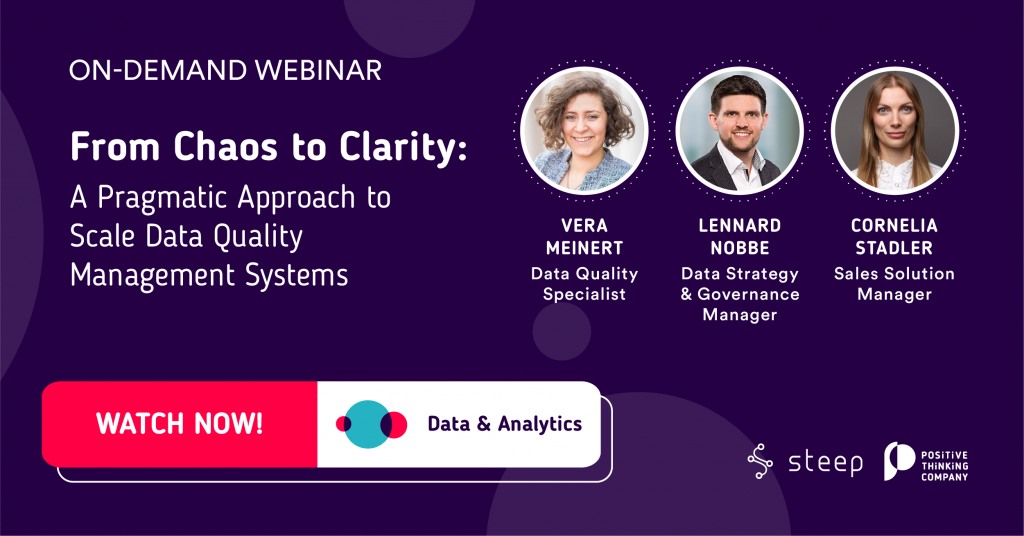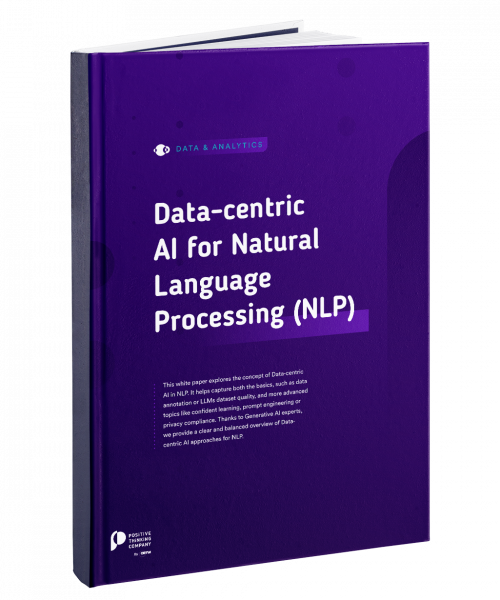Our view on the fundamental concepts of Data Governance.
According to leading analysts and when it comes to data, 2021 will be among others the year of augmented analytics, DataOps, data literacy… However, all these trends can only be successful if companies have a solid foundation in place to put the right data in the right hands.
Implementing a Data Governance initiative is essential for any modern organization seeking to leverage on data.
Before focusing on how we recommend approaching a Data Governance program in a practical way, we would like to share our view of the fundamental concepts of Data Governance.
It all starts with the Data Strategy!
Actually, it all starts with the first serious discussion about data, that should include topics like:
- What do we want to be able to do with our data?
- What kind of business decisions do we want to make based on our data?
- What is the level of confidence we currently have on the quality of our data?
Data Governance is a decision-making program on everything about data within a company, and its main goal is to ensure high-quality data that can be efficiently used across all systems and business processes.
A company needs Data Governance to manage the ever-increasing volumes of diverse data, to implement a functional discipline around data, and to have an effective data accountability structure. All this will lead to increasing the quality of data, decreasing the risks associate with data, and transforming data into a corporate asset.
By having a Data Strategy, a company has a clear direction and vision on the short- and long-term state of data, with guiding principles on what needs to be done – and, potentially, even on how to achieve it.
Commonly, once the Data Strategy is defined, the Data Principles and Data Policies should come next.
Data Principles are an exhaustive set of statements on and about data that describe the desired state of data and are defined and adopted as part of the Data Strategy.
Data Policies are a documented set of approved rules to guide and ensure the proper governance of data.
And this is why it should all start with the Data Strategy, which has to be aligned with the IT Strategy, and both have to support the overall Business Strategy.
As Data Governance is a direct application of the Data Strategy, it should be about the people, processes, and technology.
The people who will use data, the processes that will enable the management of data, and the technology that will support both the people and processes across all data domains within the company.
People
People are part of the Data Governance Operating Model, which is the way a company is organized internally in order to establish and achieve the governance of data.
The followings are the key profiles and groups, who should be at the core of this operating model:
An executive sponsor, e.g. the Chief Data Officer, who provides leadership support and funding for the data governance initiative.
A cross-functional group of data domain senior experts, organized as a Data Council, who should have decision-making rights on the data in scope at company level.
A must have are also the operational data roles and their responsibilities, i.e. those business roles identified as Data Owners and Data Stewards, who, among other things, are mainly accountable for the level of data quality within their domain of expertise.
Processes
By processes we mean the data processes, like – in no particular order – data definition, data quality, data security, data reporting, data analysis, …
From the set of data processes1, we want to highlight at this point the Data Quality. If a company has already a Data Quality process, then this process must effectively detect and monitor the data issues, and prioritize them for resolution; else, it must be designed and implemented to do so. A certain level of automation is desirable and can be achieved by using profiling tools, but has to be followed by root-cause analysis and then completed by solving the data issues.
As a general rule, in order to ensure the expected results and an overall consistency, the data processes have to be designed in accordance with the specifications defined and approved in the Data Policies.
Technology
Technology should be used to support Data Governance by implementing specialized tools designed to facilitate the governance processes, i.e. primarily Data Lineage and Data Catalog.
A Data Lineage is an application that captures the data flows within a company’s business systems and presents these flows as dynamic diagrams throughout the entire lifecycle of data, from origin to destination, e.g. from data entry point to a final report.
A Data Catalog is essentially a repository for metadata and data definitions, where governed data domains and their data elements are stored and maintained.
The choice of tools depends on the context of each organization. There are many tools available on the market, each with their strengths and room for improvement, and evaluating and choosing the ones that fit best requires all the attention and experience necessary.

Data Governance is a long-term initiative
Data Governance must be considered as a long-term initiative because it introduces a combination of complementary data roles, processes, and tools, that have to become part of the company’s daily operations. And all these roles, processes, and tools must be managed properly in order to achieve and keep the intended business results, as well as to ensure the compliance with internal policies and external regulations.
Thus, Data Governance must be planned to last well beyond the initial implementation and to continue delivering for as long as the company wants to have data at the level of quality required by their business processes.
Data Governance should be implemented incrementally and iteratively.
Incrementally, because a practical approach dictates that at first the focus should be on prioritizing the critical data, and then increase the scope to gradually include all data.
Iteratively, because each time the scope is increased, the same standards must be applied in order to achieve governance for the additional data in scope.
Choose a Data Governance implementation methodology that is flexible to adapt to your company’s operating culture, has a practical execution roadmap, and is clearly measurable to report on the progress. Actually, these are the three key success criteria on which we have based our Data Governance Methodology, a solution we are implementing at our clients.
1We will consider addressing other data processes that should be analyzed and prioritized for optimization in future articles.











